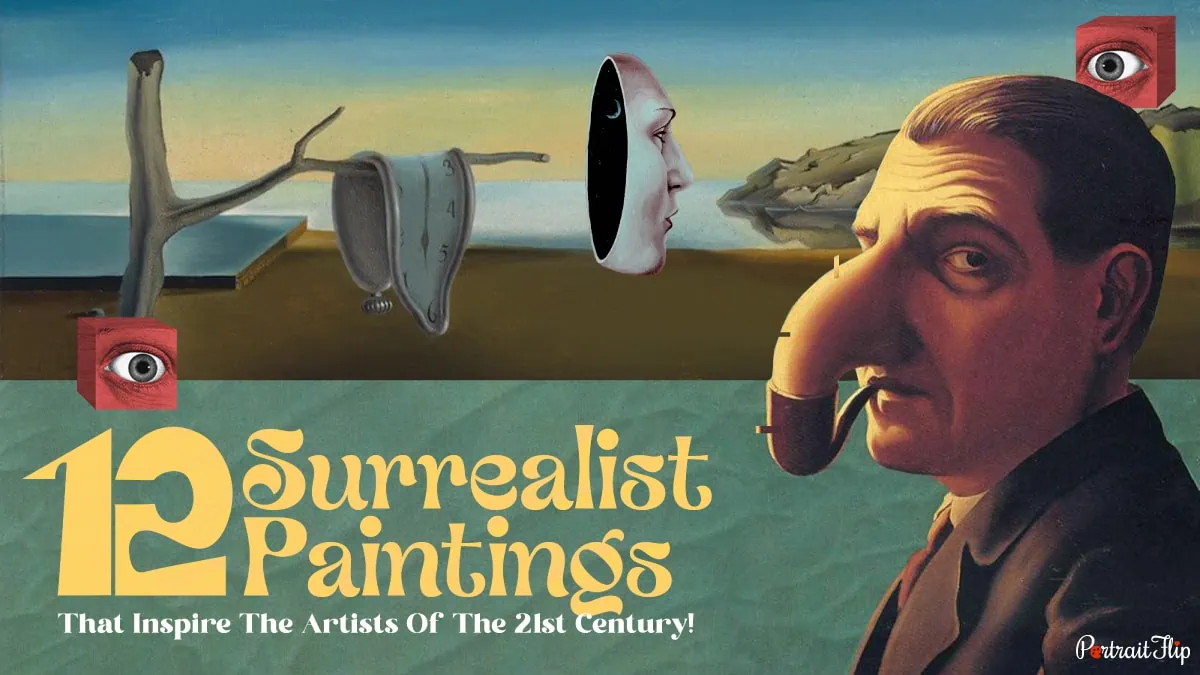Surrealism, the most popular movement of the 20th century, produced countless artworks.
Those paintings mainly depicted landscapes, dreamlike visuals, collage images, and others that had their roots in the theory of psychoanalysis.
Among all, the biggest contributors were famous painters—Salvador Dali, Pablo Picasso, and Andre Breton—who also served as inspirational sources for other movements’ artists.
Different methods and styles, including Surrealism, were adopted by both established and up-and-coming artists.
Throughout the 20th century, along with Surrealism veterans, these painters produced some well-talked-about and well-recognized Surrealism paintings.
Today, we’re going to talk about those Surrealist paintings that have embraced illogical, unexplainable, and irrational ideas to express various emotions.
Importantly, these Surrealist paintings have spoken beyond the movement and kept inspiring 21st-century artists.
Suggested Read: Paintings by Pablo Picasso
Table of contents
- 1. The Persistence of Memory
- 2. The Great Masturbator
- 3. Philosopher’s Lamp
- 4. Guernica
- 5. The Lovers
- 6. Dream Caused by the Flight of a Bee Around a Pomegranate a Second Before Awakening
- 7. Mama, Papa Is Wounded
- 8. The Tilled Field
- 9. The Treachery of Images
- 10. Ulu’s Pants
- 11. The Son of Man
- 12. The Burning Giraffe
- In Conclusion
- Author’s Note
1. The Persistence of Memory
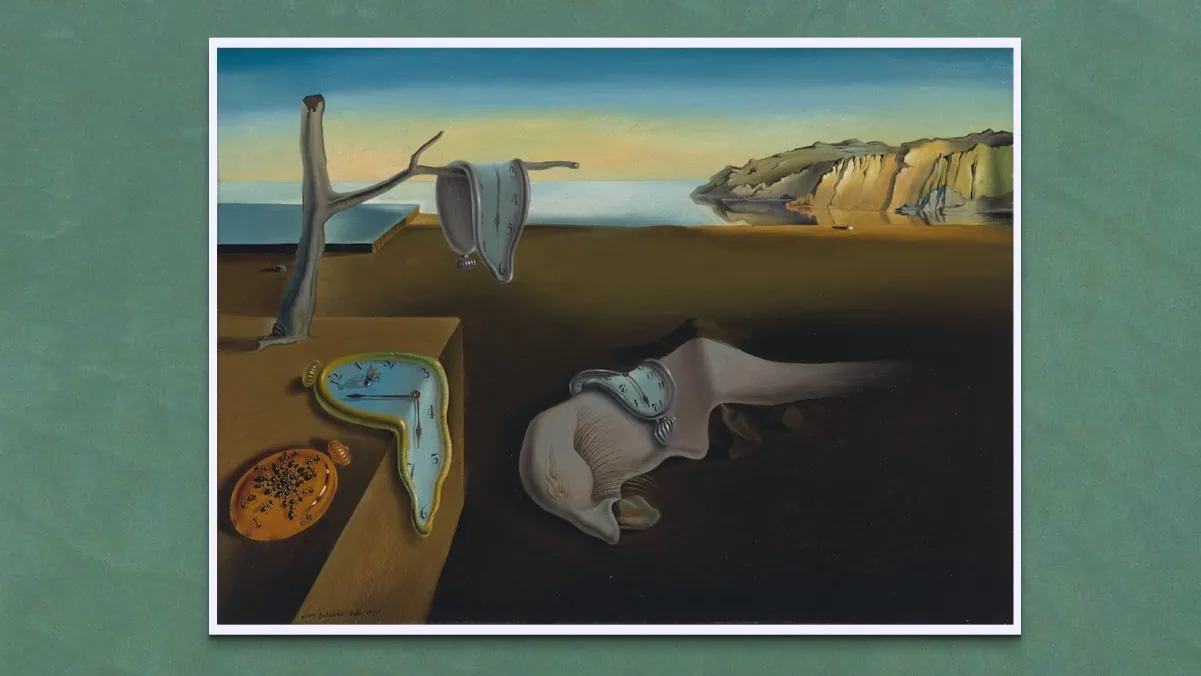
The Persistence of Memory is Salvador Dali’s most recognized Surrealist painting, which was first displayed at the Julien Levy Gallery in 1932.
The Surrealist artwork illustrates the soft melting pocket watch, which shows the contradictory thoughts of Dali.
A historian, Dawn Andes, once claimed that it was more inclined toward the cosmic.
However, Dali denied it. Dali explicitly stated that the painting uses Albert Einstein’s theory of special relativity.
When asked about it, Dali referred to the melted cheese in the sun, where a human-like figure is resting in the middle.
One can clearly see how beautifully Dali drew the mountains and the sea, which showed both softness and hardness.
It is also known by the name melting clock painting.
Dali was known for his weird style. However, he worked on a series of landscapes that were inspired by his life in Catalonia.
The Persistence of Memory was one great example of it.
Dali’s popular Surrealist painting was widely recognized and referred to in popular culture.
Today, you can view it at the Museum of Modern Art, which has been housing it since 1934.
2. The Great Masturbator

Another Dali’s Surrealist painting, made in 1929, which had been kept in his collection for a long time after being removed from the Madrid Museum.
This Surrealist art piece was one of Dali’s famous large-sized works.
The painting illustrates the distorted human face.
One would evidently see a nude female with immense sexual desire.
As the title suggests, the female figure is looking downward. However, her face is very close to a thinly-clad male crotch.
A swarm of ants, a grasshopper, and other insects are approaching her neck.
On the back, there’s a formation of two rocks and a potted dry plant.
The depiction was a reflection of one of Dali’s childhood traumas.
Backstory: Dali once saw some explicit photos of people related to a rare genital disease, which were purposely left at home by his father.
His father wanted his son to know about certain things before he turned into an adult.
Terribly disturbed by the photos, he became a painter—who would associate sex with putrefaction and decay.
Despite receiving mixed reviews in its initial days, it still managed to remain the best Surrealist masterpiece of the 21st century.
Today, you’ll find it at the Museo Nacional Centro de Arte Reina Sofia, Spain.
Now you can get the photo’s of your choice painted in a Surreal theme!
3. Philosopher’s Lamp
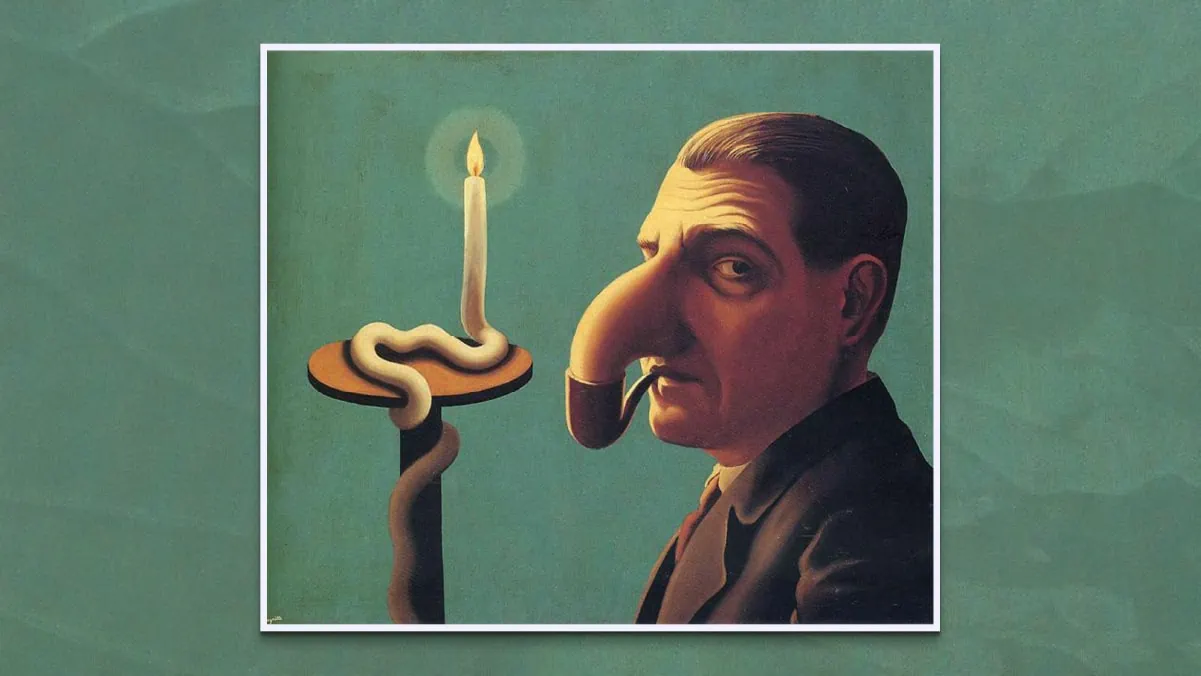
The Philosopher’s Lamp, a thought-provoking Surrealist oil painting by René Magritte.
The self-portrait has dozens of surreal characteristics and emotions.
René’s 1936 Surrealist artwork, depicting a man with a long elephant-like nose, is looking towards the viewers.
There’s subtle pain shown in his left eye; his nose is tilted downward straight to the mouth of the pipe he’s smoking.
A burned worm-like candle on the console table was placed on his left.
The depiction of the subjects in the painting shows René’s addiction to tobacco and smoking pipes.
The sad, tired eyes reflect his awareness of how impotent and pathetic it looks.
In addition, Magritte’s The Philosopher’s Lamp was one of the popular Surrealist self-portraits, which is in a private collection.
To date, artists from Europe, and America talk about it; it was once used as the cover of Alan Hull’s music album—pipedream.
4. Guernica
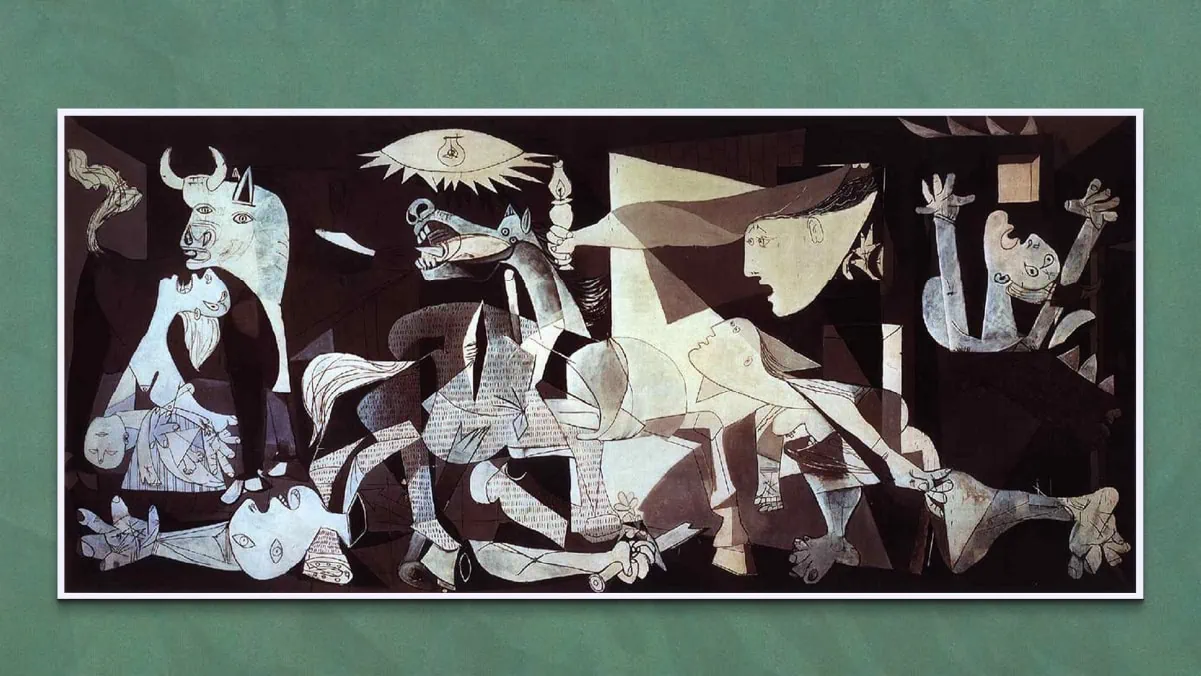
Pablo Picasso’s Guernica was the most famous political painting made in the Surrealism movement.
Firstly, Guernica was Pablo’s reaction to the Nazis’ obnoxious and barbarous acts.
Pablo deeply showcased the angst and suffering of people who lost their loved ones during the war.
Perhaps, that’s what fascinated the aspiring painters of the 21st century—who would want to witness a century-old experience through art.
In this Surrealist painting, the bull and the horse were the two dominant elements; they were also important characters of Spanish culture since he depicted the devastating environment of Bosque Town, Spain due to the Nazi invasion.
There were some hidden images, like in any other surrealist painting.
One could see a skull imposed over the horse; the bull is formed from the horse’s bent leg.
About three daggers as replacements for the horse mouths; on the sideway, the woman next to the bull is screaming.
The painting remained a reminder of the war, an anti-war sign, and an embodiment of peace.
This Surrealist art piece was actually commissioned by the Spanish Republican Government, in 1937.
The painting’s recognition, popularity, and fortune it made over the years made people remember it for a long time.
Pablo’s Surrealist painting was famous from Day 1.
But it received a huge chunk of attention when an anti-war activist and artist, Tony Shafrazi, attempted to deface it with a red spray to intensify the protest.
Later, it was displayed at New York’s Metropolitan Museum of Art, whose curator cleaned the painting and put the activist behind bars.
According to sources, Pablo’s Guernica is worth over 200 million dollars if it’s displayed for auction.
Also Read: The Old Guitarist from Picasso’s blue period!
5. The Lovers
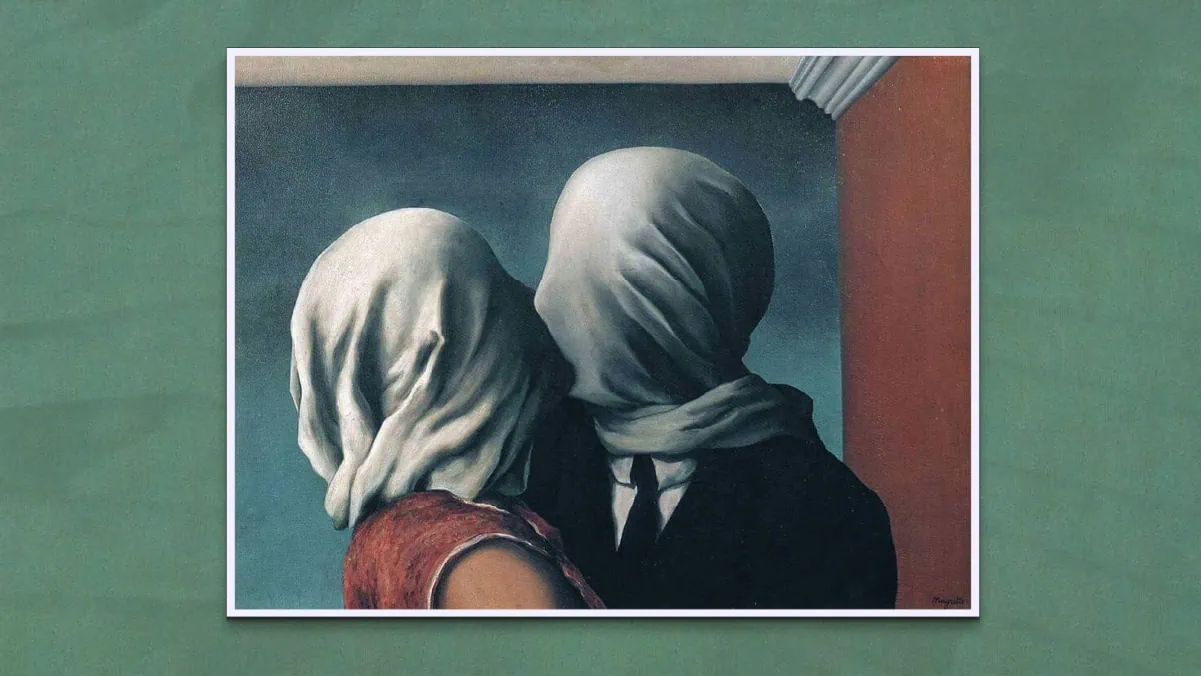
Another magnificent painting by one of the prolific Surrealist painters, Rene Magritte.
The Lovers, painted in 1928, is a thought-provoking oil on canvas Surrealist painting.
There weren’t any intriguing elements in this Surrealist artwork. However, a couple kissing the veils made it a topic of discussion.
Rene showed a man in a dominating position since he was leaning upward, kissing the woman who was tilted downward.
A man in a black blazer with a solid white shirt and a face covered in a veil is seen kissing a woman in a red gown, whose face is also covered with a white veil.
The lovers are locked in an ambiguous setting, which makes it harder to decipher the unnoticeable message.
However, René used several colors to signify emotions and intrigue his viewers.
The blue wall in their background signifies peace and serenity, whereas the red indicates anger, lust, and love.
The whitish veil, which looks grayish from different angles, signifies the fading of purity.
The Lovers, a Surrealist art example, which holds numerous meanings depending on viewer to viewer, is currently located at the Museum of Modern Art, New York.
Its uncanny composition and background made it popular in the 21st century.
6. Dream Caused by the Flight of a Bee Around a Pomegranate a Second Before Awakening

This Surrealist artwork was made during Dali’s off-peak times when he was residing in America.
It was his official return to his paranoiac-critical method, which was based on Freud’s theories.
One would see a nude lady, which was none other than Dali’s wife, floating above the separated pieces of rock.
On her left, a pomegranate is placed, with some drops of water around it, which is a Christian symbol of fertility and resurrection.
Besides, one would see two ferocious tigers approaching her; the tigers emerge to disturb the restful lady and devour her.
In the foreground and background, sky blue is dominated by a setting sun in the middle.
Also, an elephant with flamingo legs is lifted upwards, which was inspired by Bernini’s Elephant and Obelisk in Rome’s Piazza Santa Maria Sopra Minerva.
Despite staying away from painting, he drew this phenomenal Surrealist painting, which shows his true love for the movement.
Today, you’ll find this painting at the Thyssen-Bornemisza Museum in Spain.
Suggested Read: Famous Spanish Artists
7. Mama, Papa Is Wounded
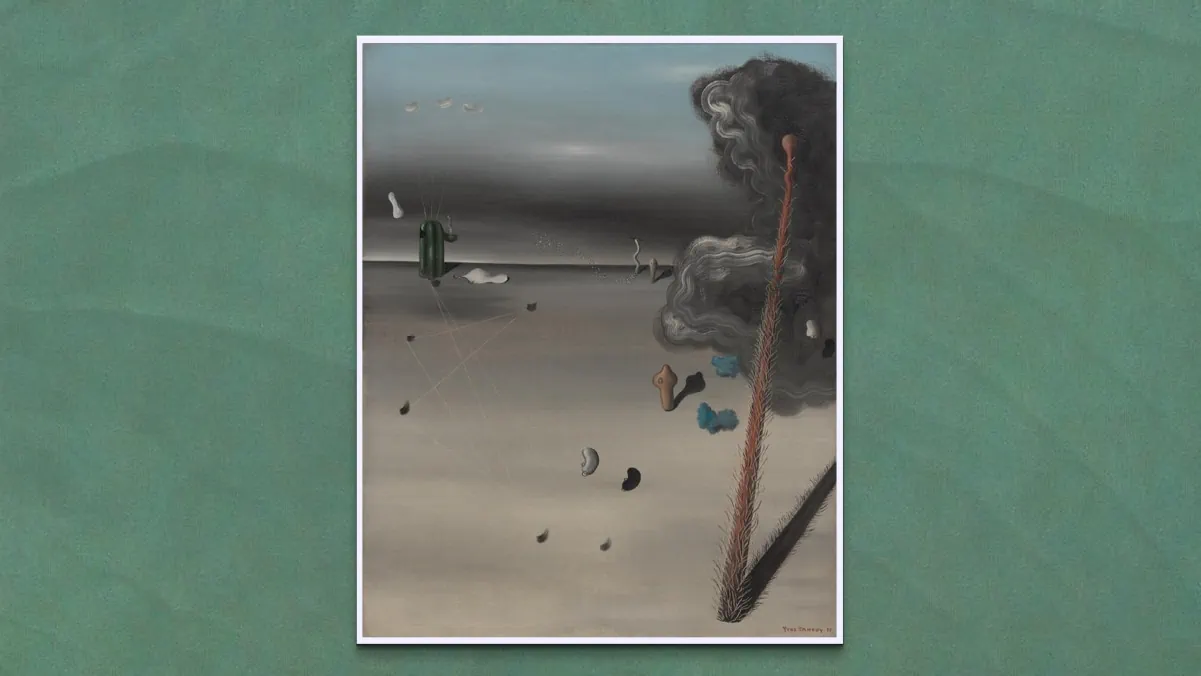
The most amazing Surrealist artwork created by Yvan Tanguy is Mama, Papa is Wounded.
A surreal scene with characteristics of a post-apocalyptic world in the background and foreground.
On the left, one would see a black shadow that represents the horrors of war.
A spider-like object was floating above a cactus-like figure in the midst of the beach.
There have been several interpretations of the picture.
Some of which underlined the ominous and uneasy atmosphere while making connections to the bloodshed of the First World War.
The yellow standing figure was used to symbolize Papa while the cactus was used to represent Mama.
The amorphous mass stood in for the offspring of Mama and Papa. This amazing piece is now on display at the Museum of Modern Art.
8. The Tilled Field
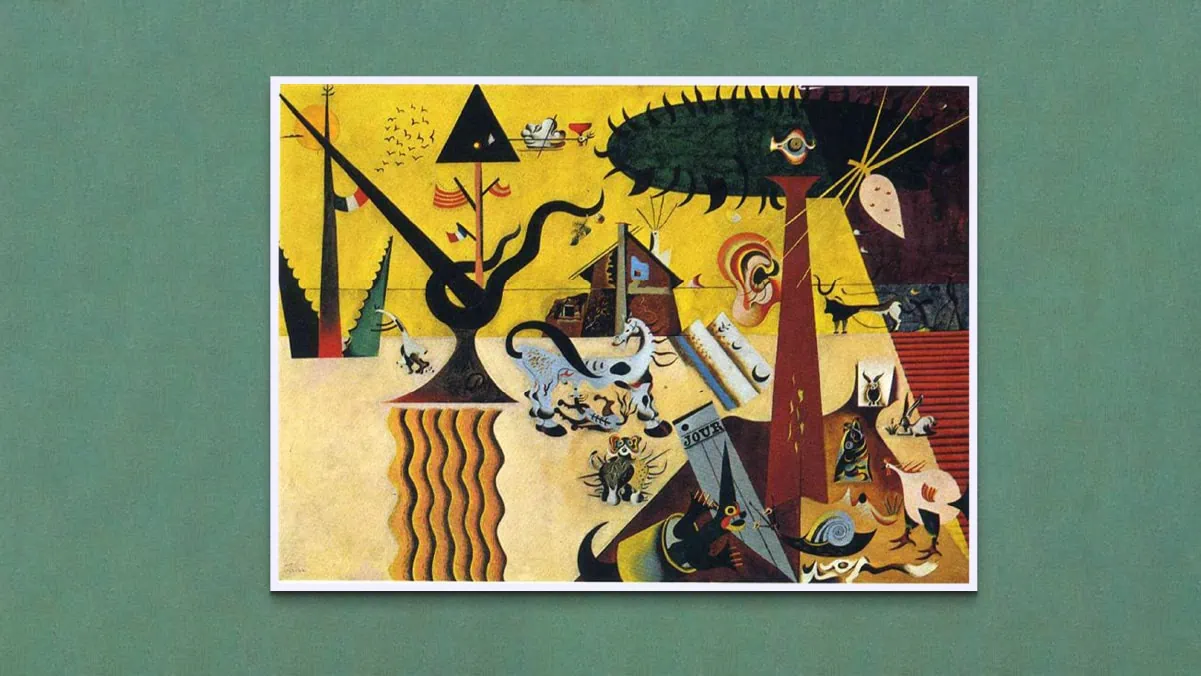
John Miro’s first Surrealist painting—The Tiled Field, isn’t less than any tapestry.
This Surrealist art piece has the fanciful juxtaposition of humans, animals, and plants—that goes well with its other elements.
He commenced his work during the summer of 1923; the painting reflects the view of his family farm in Montroig.
Completed in 1924, it is often regarded as the poetic metaphor for John’s idyllic conception of his homeland.
Vivid colors and fanciful subjects in this artwork of Surrealism reflect the political situation of Spain in 1920.
That’s why you’ll also see three flags—French, Catalan, and Spanish.
That tells one that Catalonia’s attempts to separate from the Central Spanish Government.
The Titled Field was the first artwork in his Surrealist vision, which can be viewed at the Solomon R. Guggenheim Museum.
The political element, vivid colors, and unexplainable concepts make this Surrealist painting popular among the 21st-century community.
9. The Treachery of Images
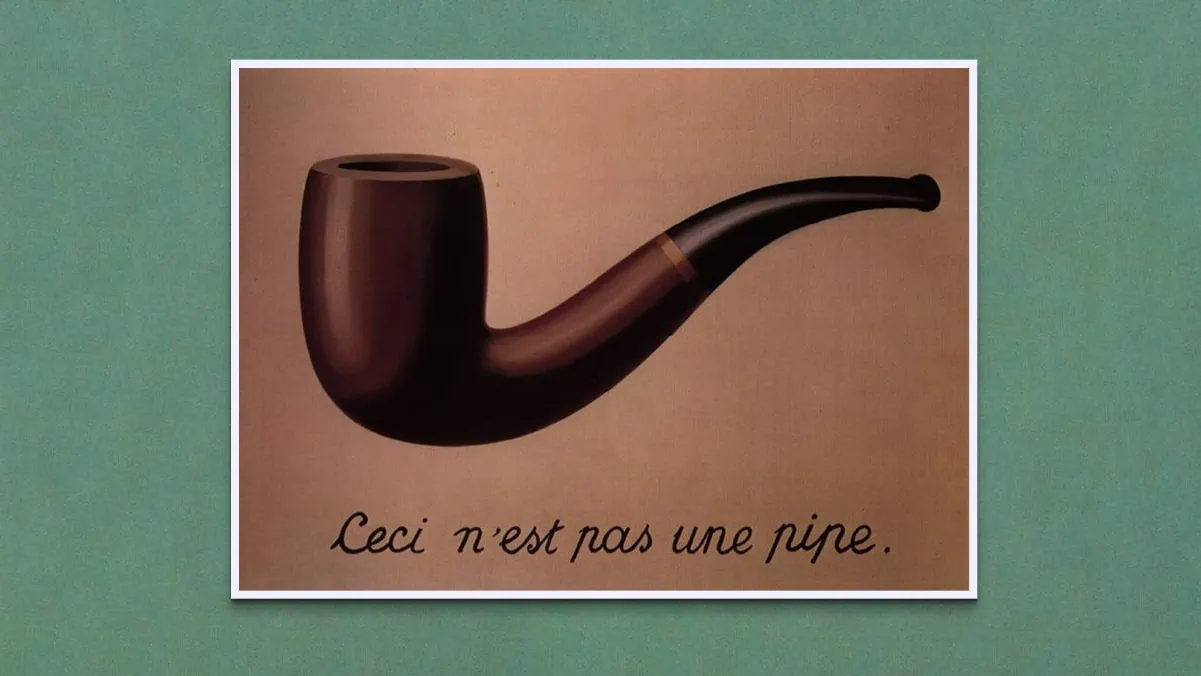
The Surrealist artwork The Treachery of Images, which includes Magritte’s pipe, is distinctive in its own way. Additionally, it is a part of a group of René’s word-image paintings that were created while the Surrealist artist was 30 years old.
It was finished in 1929 as a mirror of his previous Surrealist works.
Using techniques like duplication, repetition, misnaming of items, mirroring, and concealing, he created aggressive yet upsetting paintings during this time.
The Los Angeles County Museum of Art has housed the work, which is frequently referred to as This Is Not A Pipe, & The Wind, and The Song.
10. Ulu’s Pants
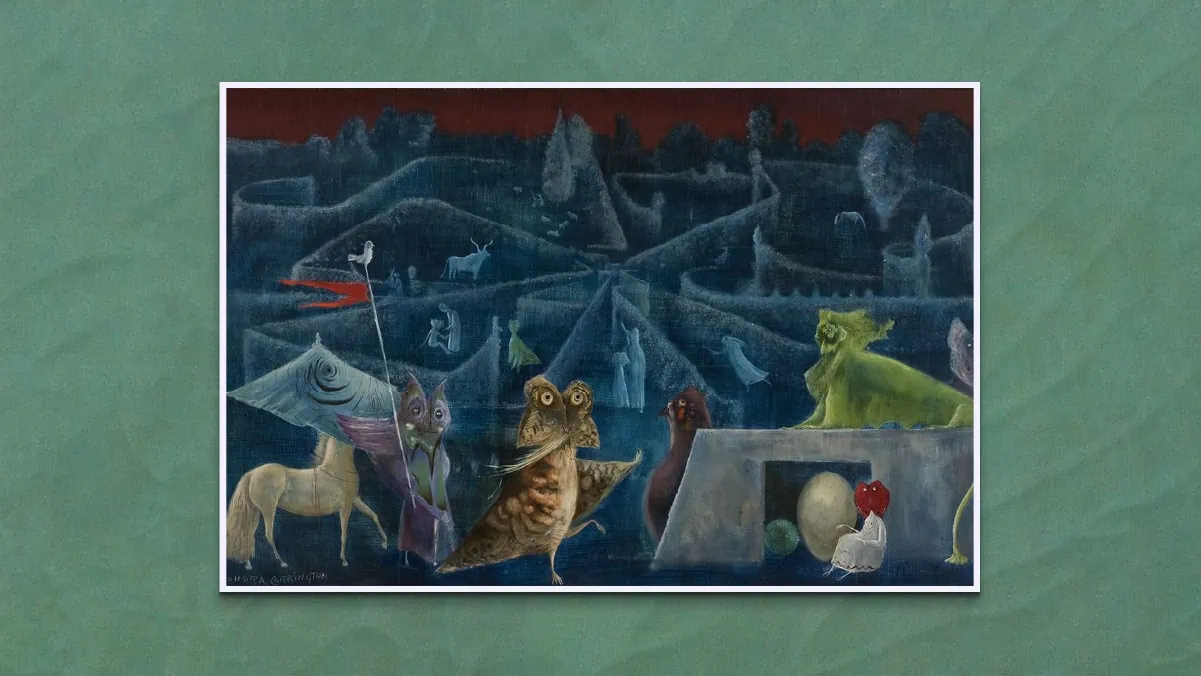
Leonora Carrington’s best surrealist piece, Ulu’s Pants, was the result of a lifetime of writing and painting.
She completed it in 1917 and included horrific elements to illustrate Celtic mythology and Mexican cultural tradition.
This amazing Surrealist work remains ageless since it depicts a road to human life that has not yet been discovered.
The meeting and fusion of many socio-psychological theories from the Western and Latin worlds is another fascinating aspect of this surrealist picture.
Although Ulu’s Pants” ownership remains anonymous, its composition created a big impact that wasn’t ever hoped for by anyone.
11. The Son of Man
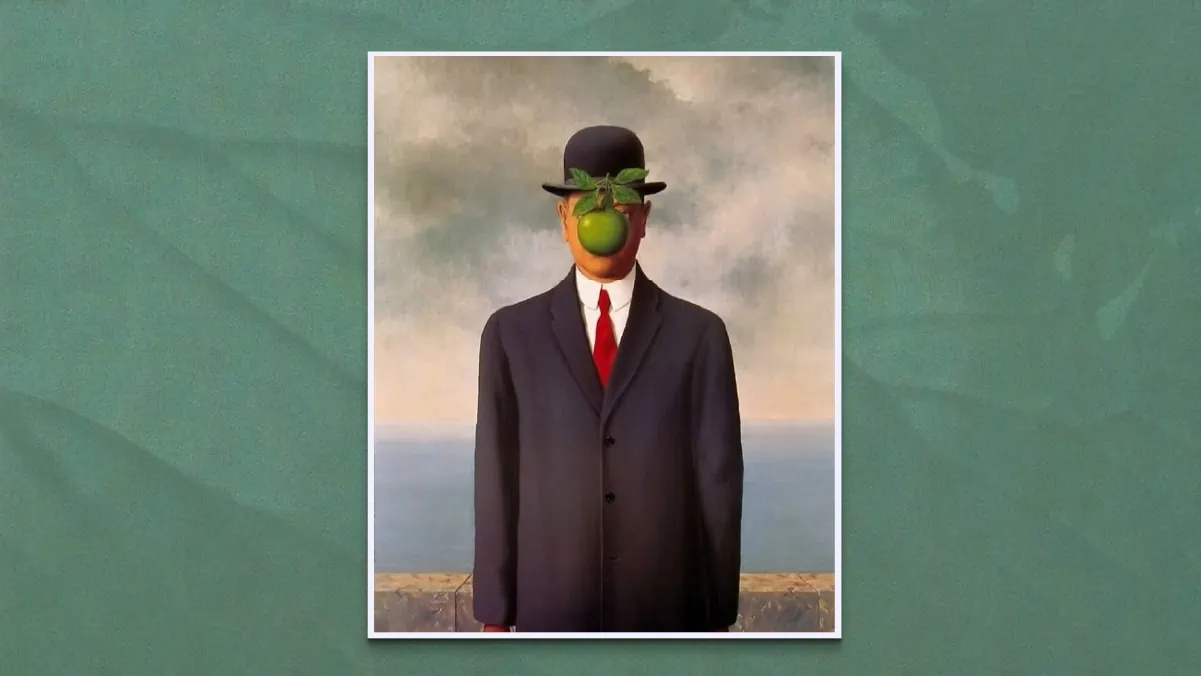
The Son of Man is undoubtedly the one painting that comes up when you search for something about Surrealism.
The Son of Man always stands out among René Magritte’s many well-known surrealist works, despite the fact that there are many.
It’s one of the Surrealist movement’s greatest self-portraits.
René is seen in the artwork wearing a bowler black hat, a solid white shirt, a red tie, and a black coat.
There is a lovely sea in the distance, with an overcast sky.
Additionally, the man’s face is mostly hidden by an apple, displaying René’s surrealist aesthetic.
The Taste of the Invisible, from 1964, is very similar to the artwork.
According to some observers, The Son of Man is a religious picture.
On the other hand, some critics see Magritte’s work as a surrealist representation of Jesus’ transfiguration.
The artwork is significant in the Thomas Crown Affair film from 1999.
In 1998, a private collector paid more than $5 million to purchase The Son of Man.
Since then, it hasn’t been on display at a gallery, and the last time it was was in the lounge of the hotel in Montreal in 2011.
Read more about the other paintings by René Magritte that reflect his subconscious mind.
12. The Burning Giraffe
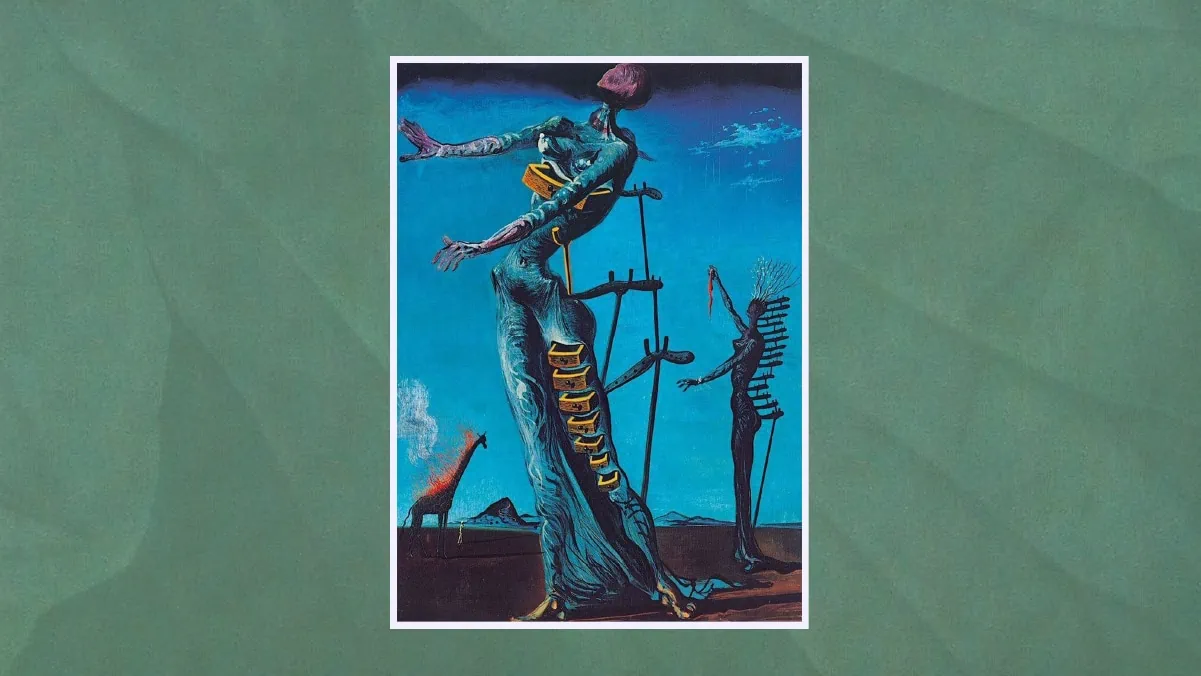
Every time someone came to see Dali, they would always compliment one of his paintings, The Burning Giraffe.
The 1937 paintings by Surrealist artist Salvador Dali show his pain and struggles while the Spanish Civil War raged around him.
A decade ago, Dali was the one who first created the picture.
With the help of Luis Bunuel, Salvador created the Burning Giraffe, which he described as a masculine cosmic apocalyptic monster.
Similar to Dali’s previous surrealist works, this one also features the feminine body is broken up and the mystification of female sexuality.
The Burning Giraffe is unique in its own way and was once stolen from Dennis Rae Fine Arts.
(You can also read: Paintings by Hieronymus Bosch That Display Spine-Chilling Stories)
In Conclusion
These 12 Surrealist paintings were the most famous ones; While painting these Surrealist artwork artists were able to recognize their talent and bring out their creativity in an unusual way.
Most of them have been housed by renowned art galleries and museums.
Today, hundreds of people pay their visits and witness artworks worth thousands of dollars.
Out of all, the most famous Surrealist paintings are The Persistence of Memory by Salvador Dali, Guernica by Pablo Picasso, and The Treachery of Images by Rene Magritte.
All the Surrealist paintings depict unrealistic message, keeping the principles in mind.
(Also Read: Paintings By Caravaggio That Portrayed His Mastery In Chiaroscuro)
Author’s Note
Good day, Readers!
Thank you for reading “12 Surrealist Artworks That Inspire Artists of the Twenty-First Century!”
I hope you find the blog interesting and useful.
If you have any more thoughts on this subject, please leave them in the comments box below.
You can also check out our social media handles, Instagram, YouTube, and Pinterest, to engage with UGC content.
We would be delighted to hear from you.
If you want to possess a reproduction of one of your favorite artists or the world’s top painters, you may get one from PortraitFlip.
We make copies and deliver them to our customers’ homes. Check out the reproduction prices for more details!
Frequently Asked Questions
Salvador Dali, Pablo Picasso, and Andre Breton were the prolific Surrealist painters.
The Persistence of Memory is Salvador Dali’s most recognized Surrealist painting.
The Great Masturbator is the largest Surrealist painting by Salvador Dali.
Rene’s Magritte’s The Philosopher’s Lamp is the most thought provoking Surrealist painting.
Pablo Picasso’s Guernica was the most famous political painting made in the Surrealism movement.
John Miro’s first Surrealist painting is The Tiled Field.

